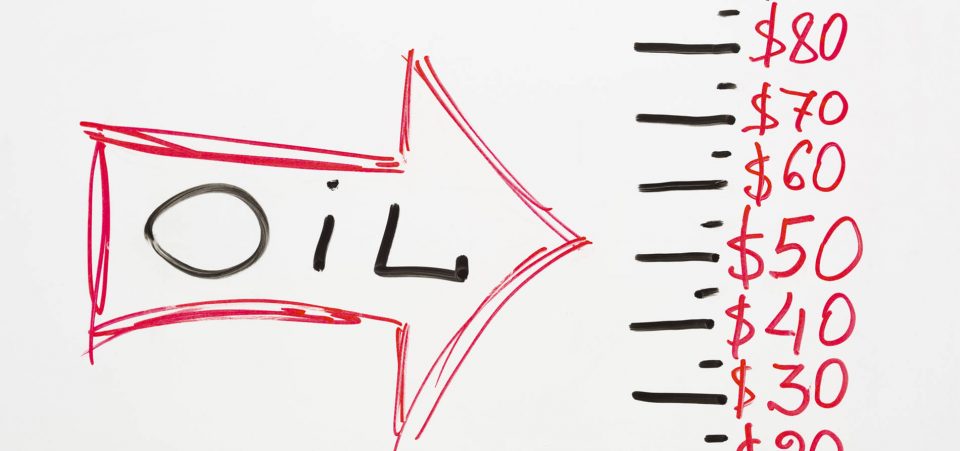Oil Prices Could Yet Collapse, as OPEC Production Cut Agreement is Fragile
The Organization of the Petroleum Exporting Countries (OPEC) has reached an agreement in Vienna to limit oil production. The general outline of the agreement, a seven percent (or 1.2 million barrels/day) cut, is based on the Algiers summit in September.
This is crucial news for the oil sector. Indeed, without it, the world was heading toward an oil shock. An oil production cut was necessary, therefore, in order to encourage investment in the sector. While consumers will pay a little more at the pump, they will also benefit.
But there is a risk. Oil prices have already reached $50.00/barrel on news of the agreed OPEC cuts. But how long can it last? Production will be reduced by 1.2 million barrels/day. The agreement will become effective on January 1. It will last six months. All OPEC members backed the cuts, except Indonesia, which said it wanted to freeze the production or suspend its membership of the organization.
Mohammed Saleh Abdulla Al-Sada, the president of OPEC, said that to balance the market, the plan needs the support of some countries that are not part of the cartel. According to Al-Sada, these countries are ready to cut production by 600,000 barrels/day, and Russia has already agreed to cut 300,000 barrels.
Thus, the agreement relies on a geopolitical balance as well. Any major deterioration in Syria could compromise it. The Russian-backed Syrian government has made important gains. Should the Saudis intensify support for the “rebel” forces, it could prompt Russia—not bound by OPEC limits—to boost its production. This would prompt a swift domino reaction, putting pressure on OPEC to reverse today’s oil production cuts.
There are abundant threats to the OPEC agreement, given the fragile geopolitical environment. The bullish market response resulting from the oil production cuts could reverse into an even more intense market decline at the slightest provocation. It could cause a market crash.
Still, had the oil price continued its recent—depressed—course, it would have risked discouraging extraction and refining activities. The result would have been an oil shock within a few years. It’s true that, for industrial powers, low oil prices ease the cost of doing business. Low oil prices, in theory, should also have increased households’ purchasing power.
Why Are Higher Oil Prices Better for the Economy Now?
The recent collapse of oil prices has produced several side effects which, over time, could be costly to consumers, whether personal or industrial. Even in oil-dependent Europe, higher oil prices are necessary in the medium term.
A basic analysis would suggest that low oil prices are an advantage for Europe. This is true, but there’s more. The main oil-producing countries and exporters trade extensively with the European Union (EU). Many are in North Africa. Higher prices can help curb the flow of illegal migration.
Lower oil prices also reduce the intense appetite for luxury consumer goods from Russia to Saudi Arabia. Moreover, oil-producing countries also tend to re-invest in Europe during periods of bullish oil prices. For the past two years, oil prices have fallen below acceptable thresholds. That has pulled funds away from stock markets and other investment vehicles alike.
The petroleum industry, with the majors and domestic companies combined, has significantly increased its production volumes to offset the decline in the value of its products. Yet, even with the slowdown in China and the rise of renewable energy, global energy demand continues to grow and will still use fossil fuels (still 75% of the energy mix in 2030, says the International Energy Agency (IEA)).
Oil Prices Hang on Delicate Geopolitical Balance
OPEC tried to push American shale producers out of the market. Led by Saudi Arabia, OPEC played a supply race to keep its market share, delaying the achievement of an equilibrium of world supply and demand.
Higher oil prices fit Goldman Sachs Group Inc’s (NYSE:GS) prescription for improving the global economy’s health. It might be a counterintuitive prescription, but more expensive crude gives oil producers surpluses. A county like Saudi Arabia can take more money than it needs, investing the surplus through global markets. In theory, this cycle raises consumer confidence. (Source: “What will lift world economy? Goldman says higher oil prices,” BusinessMirror, November 27, 2016.)
But it all depends on what Saudi Arabia does. The kingdom, after all, was the OPEC member to make the strongest case to cap production. Russia, not an OPEC member, was far less enthused by the prospect of supporting oil prices by cutting production. Russia’s central bank said the country could support much lower oil prices than at present, as low as $25.00 per barrel. (Source: “Nabiullina: closure of banks saves Russia,” Vestnik Kavkaza, November 24, 2016.)
Then there are Iran and Iraq, both allies of Russia (and opponents of Saudi Arabia and the West) in the Syrian war. Iran has just emerged from a decades-long embargo. It wants to modernize its general infrastructure. The same goes for Iraq, which is involved in the war against ISIS, and which wants to increase military spending. Should the geopolitical balance shift, it could spell the end of the oil price cuts and a collapse to pre-accord prices.






